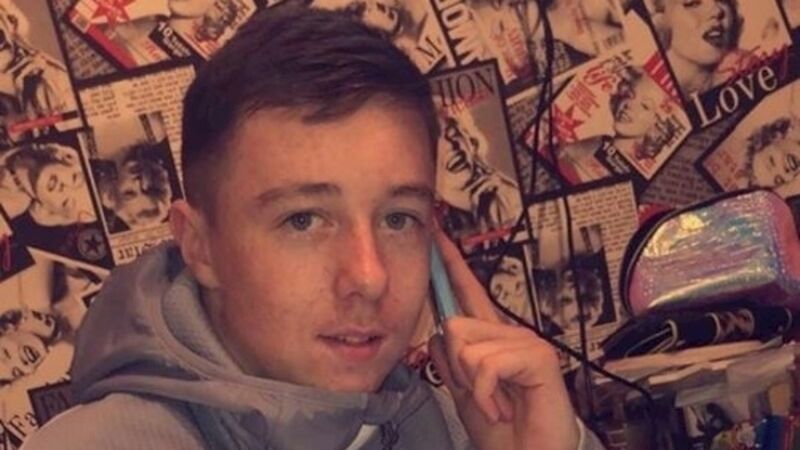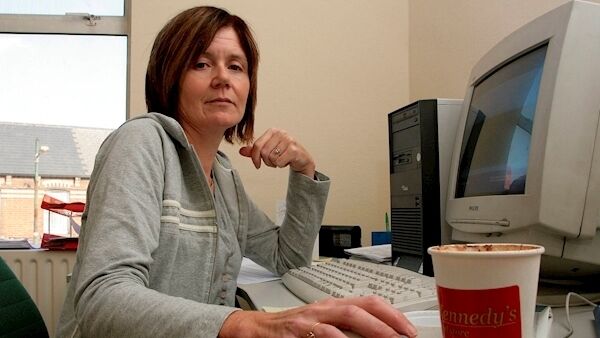Special report: Communities call for genuine partnership not more words after brutal murder of Drogheda teen

Anna Quigley is so frustrated after listening to people on the radio talking about the murder and dismemberment of Keane Mulready-Woods that she struggles to speak.
The coordinator of the Citywide Drugs Crisis Campaign said talk of the savage murder being a “new low” or a “watershed” and that there is now an urgent need for a “multi-agency approach” is like Groundhog Day.
“The fact is things don't get to this stage in a short space of time,” the veteran drugs campaigner said. “It's years and years and years getting to this.
“Saying it's a new low is simplistic, that this is the worst thing that can happen and things will now have to change. We have heard that all before.”
Ms Quigley said: “We have had years and years of violent incidents, awful things, people jump up and down, the attention moves on and communities are left to get on with it.
“Don't get me wrong, of course on a human level this is so shocking, you can't comprehend how someone can do this.”
She said talk of the urgent need for multi-agency responses drives her particularly mad: “Back in 1996 [the publication of the first ministerial task force on drugs] the view of politicians was 'we have got to a really bad point, how have we ended up at this stage?'.
What emerged was responses at law enforcement level – including the setting up of the Criminal Assets Bureau – investment in treatment and, most significantly, a partnership response by the State and communities.
“It worked for a few years [the partnership] because there was political support. Since then the gradual response of the State to communities most affected has got weaker and weaker, disjointed. It's not a priority anymore. All the education and prevention stuff is gone. The joint up approach is not there. And there has been a complete failure on the economic side. Young men see the drugs trade as the 'best job for me' and I'm not justifying their actions.”

She said "genuine" partnership with communities was needed, not words.
On policing, she cited recent comments by Assistant Commissioner for Dublin Pat Leahy who said that the focus in recent years had been on gangland violence and the Kinahan-Hutch feud.
The officer said last month that the last three years had “probably the best three years in tackling that level of gangland-oriented crime” and said many significant criminals were “in prison or have left the country and can't come home”.
But he said the other story was that community policing has suffered massively because of austerity.
“Community policing took a battering during austerity, we kinda were withdrawn from communities,” he said.
“Now we have to take it back, go back into communities, recover that space, shift the balance of power and rebuild relationships.”
Eddie D'Arcy has been working with young people in disadvantaged areas of west and south inner city Dublin for almost 40 years.
He said the murder is “absolutely shocking” particularly given the age of the victim.
“People are shocked, it's not just that a 17-year-old was shot, that has happened before, but the level of savagery associated with it is extremely brutal.”
The circulation of videos on social media have aggravated the savagery, he said.
He said it indicates that the level of involvement in gangs of kids aged around 17 is “much more serious” than people had thought.
Young people are “vulnerable and much easier to manipulate and be forced to do things”, he said adding it was typically youths aged 18-20 that suck in the 15-16-year-olds.
Mr D'Arcy said there is an argument for a “junior CAB” to target the young lieutenants displaying wealth without any means: “I'm talking about the 20-year-old driving around in flash cars, flash clothes, his own apartment, going on holiday 3-4 times a year.”
The images gardaí released of clothes similar to what Keane was wearing when he disappeared - the Canada Goose jacket and Hugo Boss tracksuit top and bottoms - gives an insight into the money from drugs.
Mr D'Arcy said the enormous profits being made from drugs, particularly cocaine, is fuelling the violence.
He said a key priority for the State is to target teenagers getting sucked into gangs and, even more so, those already embedded in the trade.
“We need to identify key young people in communities caught up in this and intensify resources for those people.
“We do need to target those getting sucked in. There are programmes for kids at risk. But it has got to the point we need to focus on those already in it. There is a dearth of programmes for those already caught up in very serious offending in adult gangs, sometimes with family members.
“We saw in the ages of the men murdered in Coolock last year [all three aged 22] the level of involvement of young men engaged in very serious violence.”
He added: “To get them to give up the particular lifestyle you need to offer them something in its place. You want to stop their offending behaviour by providing alternatives, including decent employment.”
He cited pilot projects being set up by the University of Limerick Greentown research team which is examining the involvement of children in criminal networks.
The head of that project, Professor Sean Redmond said the murder of Keane, while horrific, followed a trend: “It is outrageous and grotesque, but it is an escalation in a pattern of behaviour that has been happening for a long time."

He said that while teenagers can first be “attracted” to joining a criminal network, pretty soon obligations come with it - either because of drug debts or because drugs they were holding were confiscated by gardaí - such as carrying out acts of violence.
“Our research shows that kids in these communities are subject to very powerful regimes of coercion,” he said.
“These gangs have been around a long time, they require the input of children at the bottom to be sustainable.”
He said this is “predatory behaviour”, that those who do it are “predators” and that the issue is a child protection one.
He said they were about to publish two new reports following on from the Greentown study and that, this year, they will start what he described as “world-leading” pilot projects targeting young people involved in drug networks in two communities.
This intensive project, running for two years, will identify 20-30 children and young people in each area involved in holding drugs and small sales and “work with them intensively” and provide their families with “protection”. The aim is to provide the kids with a “trajectory out of the network”.

He added: “This will look at how you disrupt networks through law enforcement and child protection and give the children pro-social opportunities and work with communities to help them to get back on their knees.”
He said this would be “dangerous” work and would be “a really hard job”.
A hard job. But one that might just offer some hope.










